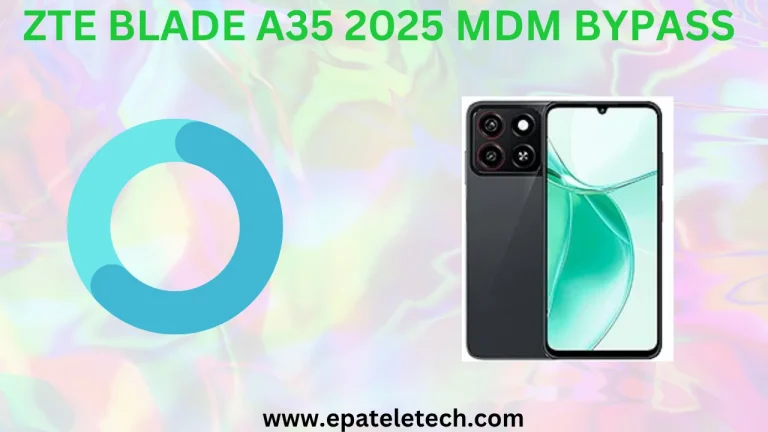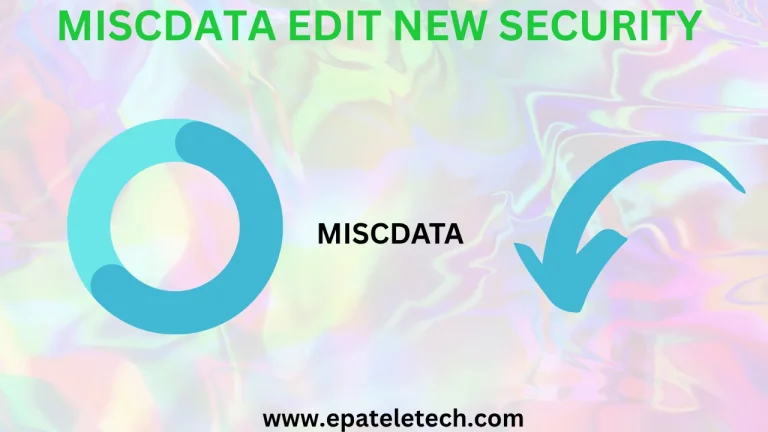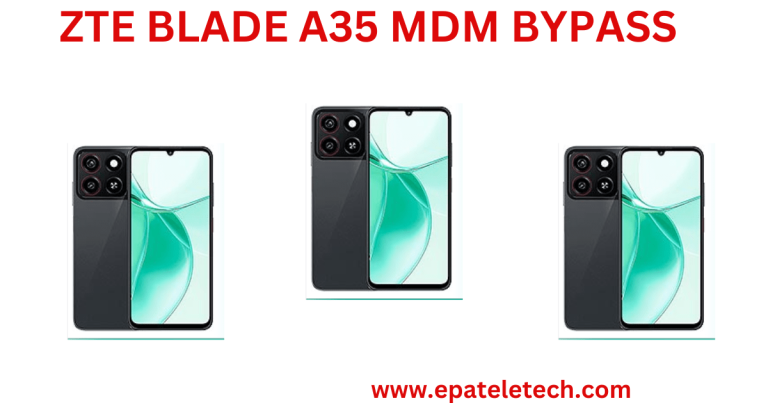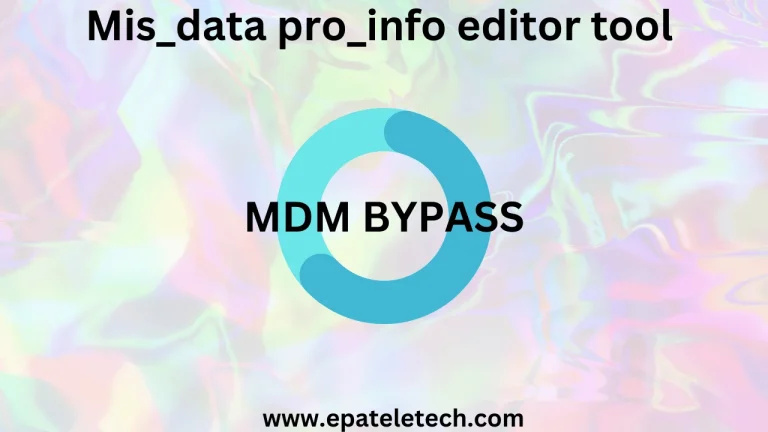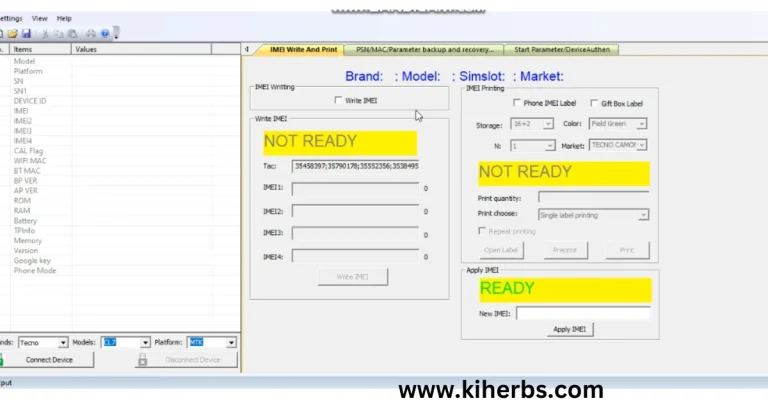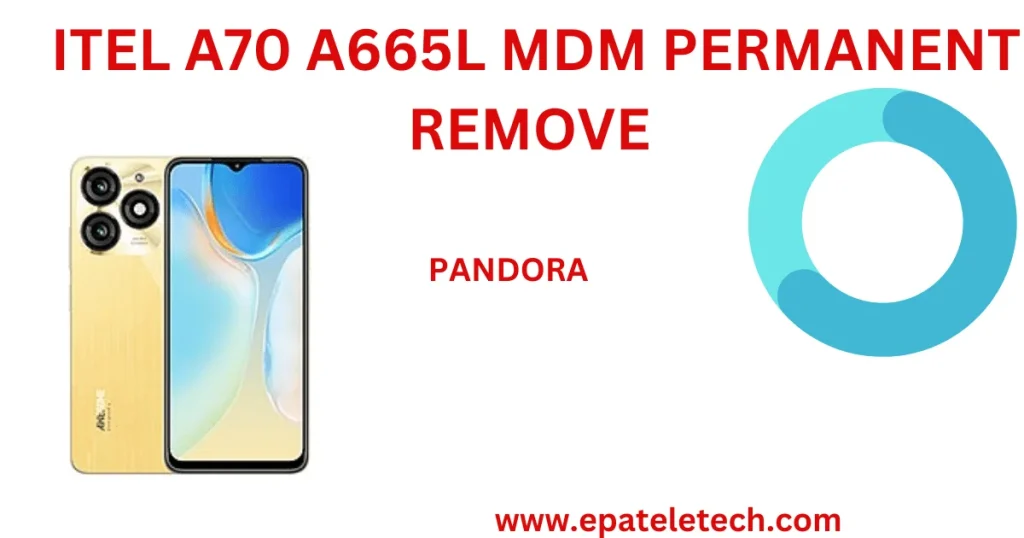
The itel A665L is a budget-friendly smartphone that is part of the itel A-series lineup, designed to offer essential smartphone functionality at an affordable price point. Here’s a brief description of the device:
Key Features and Specifications:
- Display:
6.0-inch IPS LCD display with a resolution of 720 x 1440 pixels (HD+), offering decent clarity and color reproduction for a budget phone. - Design:
A simple and practical design with rounded edges and a plastic body. It’s available in a variety of colors. - Processor:
Powered by a basic Quad-core processor (likely a MediaTek or similar chipset) suitable for light tasks such as calling, messaging, social media, and web browsing. - RAM & Storage:
The phone typically comes with around 1GB or 2GB of RAM and 8GB or 16GB of internal storage. Storage is often expandable via a microSD card slot, allowing you to increase space for apps, photos, and other files. - Camera:
- Rear Camera: A 5MP or 8MP camera setup, designed for basic photography. Features like HDR and panorama modes may be included for enhanced photo quality.
- Front Camera: Typically a 5MP or 3MP selfie camera.
- Battery:
A 3000mAh or larger removable battery that should provide enough power for light usage throughout the day. Charging is via a standard Micro-USB port. - Operating System:
It runs on Android Go Edition, a lightweight version of Android designed for devices with limited resources, helping to optimize performance and memory management. - Connectivity:
Includes 4G LTE support, Bluetooth, Wi-Fi, GPS, and a 3.5mm headphone jack, providing basic connectivity options for everyday use. - Additional Features:
The phone may come with a fingerprint scanner or face unlock feature for added security, though these are more common on slightly higher-end models.
Target Audience:
The itel A665L is primarily aimed at users who need a basic smartphone for everyday tasks like calling, texting, social media browsing, and light media consumption. It’s a good option for those who are on a tight budget or need a secondary device.
Overall:
For its price, the itel A665L offers essential smartphone features, making it a solid choice for first-time smartphone users or anyone needing a reliable, no-frills device for basic usage. However, it may not be suitable for heavy gaming, multitasking, or high-end app usage due to its limited specs.
MDM stands for Mobile Device Management, which refers to a set of technologies, policies, and processes that allow organizations to manage, secure, and monitor mobile devices, such as smartphones, tablets, and laptops. MDM is especially important in business environments where employees use mobile devices to access company data, applications, and networks. It helps organizations ensure that these devices comply with corporate security standards and policies.
Key Features of MDM:
- Device Enrollment:
- Devices are enrolled into the MDM system, often through an automated process or manual registration.
- This enables administrators to push configurations, policies, and apps to the device remotely.
- Security and Compliance:
- Remote Lock and Wipe: In case of loss or theft, an MDM solution can remotely lock a device or wipe its data to protect sensitive company information.
- Encryption Enforcement: MDM can enforce encryption policies on the device to ensure that all data is secure, both on the device and during transmission.
- Password Policies: Administrators can enforce strong password rules (e.g., minimum length, complexity, or expiration).
- App Control: MDM solutions allow administrators to control which apps can be installed, ensuring that only trusted, compliant apps are used.
- App Management:
- App Distribution: MDM systems can remotely distribute apps to mobile devices, ensuring that the right apps are installed on the devices.
- App Whitelisting/Blacklisting: Organizations can prevent employees from downloading unauthorized apps (blacklisting) or can ensure only approved apps are installed (whitelisting).
- App Configuration: MDM solutions can automatically configure certain apps with the necessary settings to ensure they work properly in the corporate environment.
- Monitoring and Reporting:
- MDM platforms provide tools to track device status, usage patterns, and compliance with corporate policies.
- Administrators can generate reports on device health, app usage, data usage, security threats, and more.
- Geo-Location and Geofencing:
- MDM solutions can track the location of devices via GPS, which is useful for asset management and tracking lost or stolen devices.
- Geofencing allows administrators to set virtual boundaries around specific geographic areas (e.g., company premises), and trigger actions (like locking the device) when the device enters or exits these areas.
- Network Control:
- VPN Management: MDM allows the configuration of Virtual Private Networks (VPNs) to ensure secure access to corporate networks.
- Wi-Fi and Bluetooth Configuration: MDM can automatically configure Wi-Fi, VPN, or Bluetooth settings, making it easier for users to connect to secure corporate networks.
- Content and Document Management:
- MDM systems can manage access to corporate documents and files, ensuring that users only have access to the right content based on their role.
- File-sharing solutions may be integrated with MDM, enabling secure access to documents while preventing unauthorized sharing.
- Policy Enforcement:
- MDM solutions allow for the creation and enforcement of policies regarding device usage, such as restrictions on camera usage, screen capture, or preventing data sharing between personal and work apps.
- Zero-touch Provisioning:
- Zero-touch provisioning allows devices to be automatically configured and enrolled into the MDM system as soon as they are turned on, eliminating the need for manual setup by IT teams.
Types of MDM Deployment Models:
- On-Premises MDM:
- The MDM server and infrastructure are hosted within the organization’s own data centers.
- Offers more control over security but requires internal resources for maintenance and updates.
- Cloud-based MDM:
- MDM solutions hosted on cloud servers provided by third-party vendors (such as VMware, Microsoft, or IBM).
- More cost-effective and easier to scale, as the vendor handles server management and updates.
- Hybrid MDM:
- A combination of both on-premises and cloud-based MDM solutions, allowing organizations to take advantage of both models.
Popular MDM Solutions:
- VMware Workspace ONE:
- A unified endpoint management solution that covers mobile, desktop, and IoT devices.
- Provides comprehensive security, app management, and access control.
- Microsoft Intune:
- A cloud-based MDM solution that integrates with Microsoft 365.
- It provides mobile device and app management features and is commonly used by organizations that rely heavily on Microsoft products.
- MobileIron (now part of Ivanti):
- Offers strong device security, app management, and data protection features.
- Suitable for companies looking for comprehensive enterprise mobility management.
- Jamf Pro:
- Tailored for Apple devices, Jamf Pro is one of the leading MDM solutions for iPhones, iPads, and Macs.
- It offers deep integration with Apple’s ecosystem and is preferred by organizations using Apple devices extensively.
- AirWatch (now part of VMware):
- A comprehensive MDM solution that manages all types of mobile devices, including smartphones, tablets, and laptops.
- It offers a wide array of features for device management, app distribution, and security.
- Cisco Meraki:
- A cloud-based MDM solution that offers ease of use and is particularly suitable for small to medium-sized businesses.
- Provides features like device tracking, app management, and network control.
- BlackBerry UEM (Unified Endpoint Management):
- Known for its security and enterprise-grade management capabilities, BlackBerry UEM supports a wide range of device types, including iOS, Android, and Windows devices.
- It’s often used by organizations that prioritize data security and regulatory compliance.
Benefits of MDM:
- Enhanced Security:
- MDM helps secure mobile devices by enforcing encryption, password policies, remote wipe capabilities, and more.
- It helps protect sensitive company data from being compromised in case a device is lost or stolen.
- Compliance with Regulations:
- MDM can ensure that devices comply with industry-specific regulations such as GDPR, HIPAA, or PCI-DSS by enforcing appropriate security measures.
- Reduced IT Costs:
- Automating the setup, configuration, and maintenance of mobile devices reduces the burden on IT teams and helps improve efficiency.
- Improved Productivity:
- MDM solutions enable secure access to company resources, apps, and data, allowing employees to work from anywhere while maintaining security.
- Remote Management:
- Devices can be managed, updated, and secured remotely, saving time and resources that would otherwise be spent managing devices on-site.
Challenges with MDM:
- User Privacy Concerns:
- MDM systems often track device location, app usage, and other personal data, leading to potential privacy concerns for employees.
- Complexity in Management:
- Managing a large number of devices, especially in diverse environments (BYOD, corporate-owned), can be complex and requires careful configuration and ongoing monitoring.
- Device Compatibility:
- Different devices and operating systems (iOS, Android, Windows) may require different MDM solutions or configurations, leading to potential compatibility issues.
- User Resistance:
- Some users may resist the control and restrictions imposed by MDM, particularly in Bring Your Own Device (BYOD) environments.
Conclusion:
Mobile Device Management (MDM) plays a crucial role in the security and management of mobile devices within organizations. It enables IT administrators to remotely configure, secure, and monitor devices, ensuring that corporate data remains protected while providing employees with the flexibility to use mobile technology. However, it is essential for organizations to balance security measures with user privacy and device usability to achieve the best results.
Removing MDM (Mobile Device Management) from a device refers to the process of disassociating or de-enrolling a mobile device (such as a smartphone or tablet) from an MDM solution. Once MDM is removed, the device will no longer be under the control or management of the organization’s IT department, meaning the restrictions, monitoring, and management features imposed by MDM will be lifted.
Why Remove MDM from a Device?
- Employee Leaving the Organization:
- When an employee leaves the company or no longer needs the device, the organization may wish to remove the MDM profile from the device to revoke access to corporate resources.
- Personal Devices (BYOD):
- In Bring Your Own Device (BYOD) environments, employees may want to remove the MDM profile once they no longer need access to work-related apps or data.
- Device Sale or Transfer:
- If a device is being sold, given away, or repurposed, removing MDM ensures that personal data and device security settings are not tied to the previous organization’s policies.
- Releasing Device from Organization’s Control:
- Companies may need to remove MDM if a device is no longer being used for business purposes, especially if the device is being transferred to someone else or retired.
Common MDM Removal Methods
The process of removing MDM depends on the platform (Android or iOS) and the MDM software being used. Here’s how it is generally done on popular platforms:
For iOS Devices (iPhone or iPad):
1. Through MDM Management (Admin Control):
- IT Admin: If the device is still under an active MDM profile, an IT administrator can remotely remove it from the MDM system. This is typically done using the MDM server’s management console (e.g., Apple School Manager, Jamf, MobileIron, etc.). The device will receive a command to un-enroll and remove the MDM profile.
2. Manually Removing MDM Profile (If Authorized):
- On the device, go to Settings > General > Device Management (or Profiles & Device Management).
- Select the MDM profile listed.
- Tap Remove Management or Delete Profile.
- Enter the device’s passcode if prompted.
Note: In some cases, you may need the device’s MDM credentials or an admin password to remove the MDM profile. If the device was enrolled via an MDM solution that applies restrictions, you may not be able to remove it without administrator rights.
3. Factory Reset (Last Resort):
- If you cannot remove the MDM profile through the standard settings and you’re authorized to remove the device from MDM, you can factory reset the iPhone:
- Go to Settings > General > Reset > Erase All Content and Settings.
- After the reset, the device may still be tied to the MDM if the organization’s system has a forced re-enrollment policy.
- In this case, the MDM admin will need to remove the device from the MDM server completely.
4. Apple’s Activation Lock:
- If the device is linked to Apple’s Activation Lock (via Apple ID), the device may still be locked and require the Apple ID and password to unlock it. Activation Lock is separate from MDM but is often used in conjunction with it in corporate environments.
For Android Devices:
1. Through MDM Management (Admin Control):
- As with iOS, the most efficient way to remove MDM from an Android device is through the MDM server. The IT admin can remotely revoke access, unenroll the device, and remove any management profiles from the device via the MDM console (e.g., AirWatch, MobileIron, Samsung Knox, etc.).
2. Manually Removing MDM Profile (If Authorized):
- On the device, navigate to Settings > Security or Lock screen & security (varies by manufacturer).
- Look for Device Administrators or Device Management.
- Find the MDM app or profile, and disable or uninstall it.
- If the device was enrolled through a specific app (e.g., Samsung Knox, Google Device Policy), you can often go into that app and select the option to “Unenroll” or “Remove Management”.
Note: As with iOS, certain MDM systems may lock down the ability to remove MDM profiles without admin credentials or special permissions.
3. Factory Reset (Last Resort):
- If you are unable to remove the MDM profile through the device’s settings, a factory reset may be the next step:
- Go to Settings > System > Reset options > Erase all data (factory reset).
- After the reset, the device might re-enroll into MDM if there is an automatic re-enrollment policy in place (such as via Google Zero-Touch Enrollment or Samsung KME).
- In such cases, the admin must remove the device from the MDM system.
4. Device Admin Apps:
- Some MDM solutions use Device Administrator apps to manage the device. If these apps are installed, you’ll need to go to the Device Administrators section under Settings > Security, and disable them before being able to uninstall the app.
Other Considerations When Removing MDM:
- Remote Wipe:
- In certain cases, even after removal, an MDM solution can perform a remote wipe of the device if it’s still enrolled in the system. This would erase all data, apps, and settings on the device. Make sure you back up any important data before removing MDM.
- BYOD Devices:
- For Bring Your Own Device (BYOD) users, removing MDM may void access to company apps, data, and secure networks. You should consult your organization’s IT department to ensure compliance with company policies when removing MDM.
- Re-enrollment:
- If the device is enrolled in an auto-enrollment system (such as Apple DEP, Android Zero Touch, or Samsung Knox), removing MDM temporarily may not be enough, as the device might automatically re-enroll when reset or after a network connection. To completely de-enroll, the device must be removed from the MDM server.
- Corporate Restrictions:
- Removing MDM from a company-issued device without authorization could violate company policy, especially if the device contains sensitive or proprietary data. Always confirm with the IT department before attempting to remove MDM from a corporate device.
- Activation Lock (iOS Specific):
- Apple Activation Lock prevents the device from being used by someone else if the MDM is removed improperly. You may need to enter the Apple ID and password associated with the device to disable the Activation Lock.
Conclusion:
Removing MDM from a device can be a straightforward process if you have the appropriate permissions and access. It typically involves either administrative control through the MDM platform or user-level options within the device’s settings. However, certain devices may have restrictions, and in cases where security policies are strictly enforced, the process can be more complicated.
Always ensure you follow the proper channels (e.g., contacting your IT department) to avoid violating any company policies or losing access to important data. If you are dealing with personal devices in a BYOD environment, be mindful of potential data loss or security issues when removing MDM profiles.
ITEL A665L MDM REMOVE STEPS
- Instructions Pandora
- After operation Power off
- Step 1 Restore from (STEP 1 folder)
-miscdata
-misc
-uboot a and b - Remove usb cable
- 2.Unlock bootloader
- Remove usb
- Flash this pac MDM file(STEP 2 folder)
- 4.Unlock Bootloader
- Job done
- ============================================
- FOR MORE SOLUTIONS, FIRMWARES AND MDM FILE ETC..
- WHATSAPP; +255757937196
- THANK YOU
DOWNLOAD FILE HERE V1180
A665L A70 V1567
- Wipe data and frp,dont power on..wipe miscadata.
- Restore mdm super
- Wipe data
- Boot the phone..will bootloop and take you to factory reset manually
- Factory reset then give it time to Boot
- Done..disable updates and ota.




